Experience the Power of Productivity
Make your team 40% more efficient. Set up your account in just 2 minutes!

Relying on manual scheduling often leads to mistakes, such as overlapping shifts or missed assignments, resulting in operational inefficiencies.

Without insights from scheduling data, it’s challenging to make informed decisions that could optimize workforce efficiency and resource allocation.

Unfair or inconsistent scheduling can result in employee frustration, contributing to higher turnover rates and low profit.
Replace manual systems with automated scheduling software to gain valuable insights into your team's scheduling patterns and performance with intuitive data analytics.
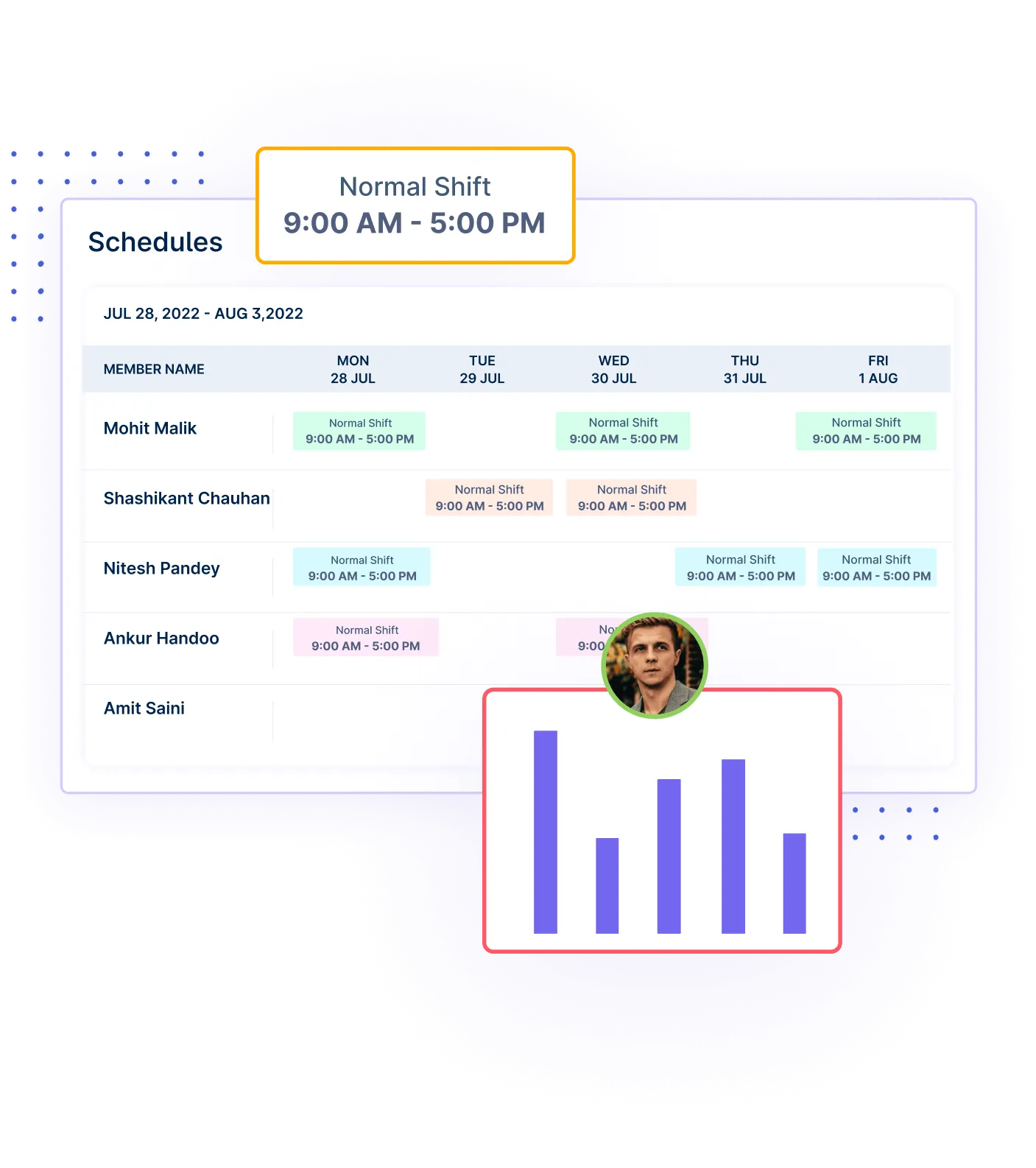
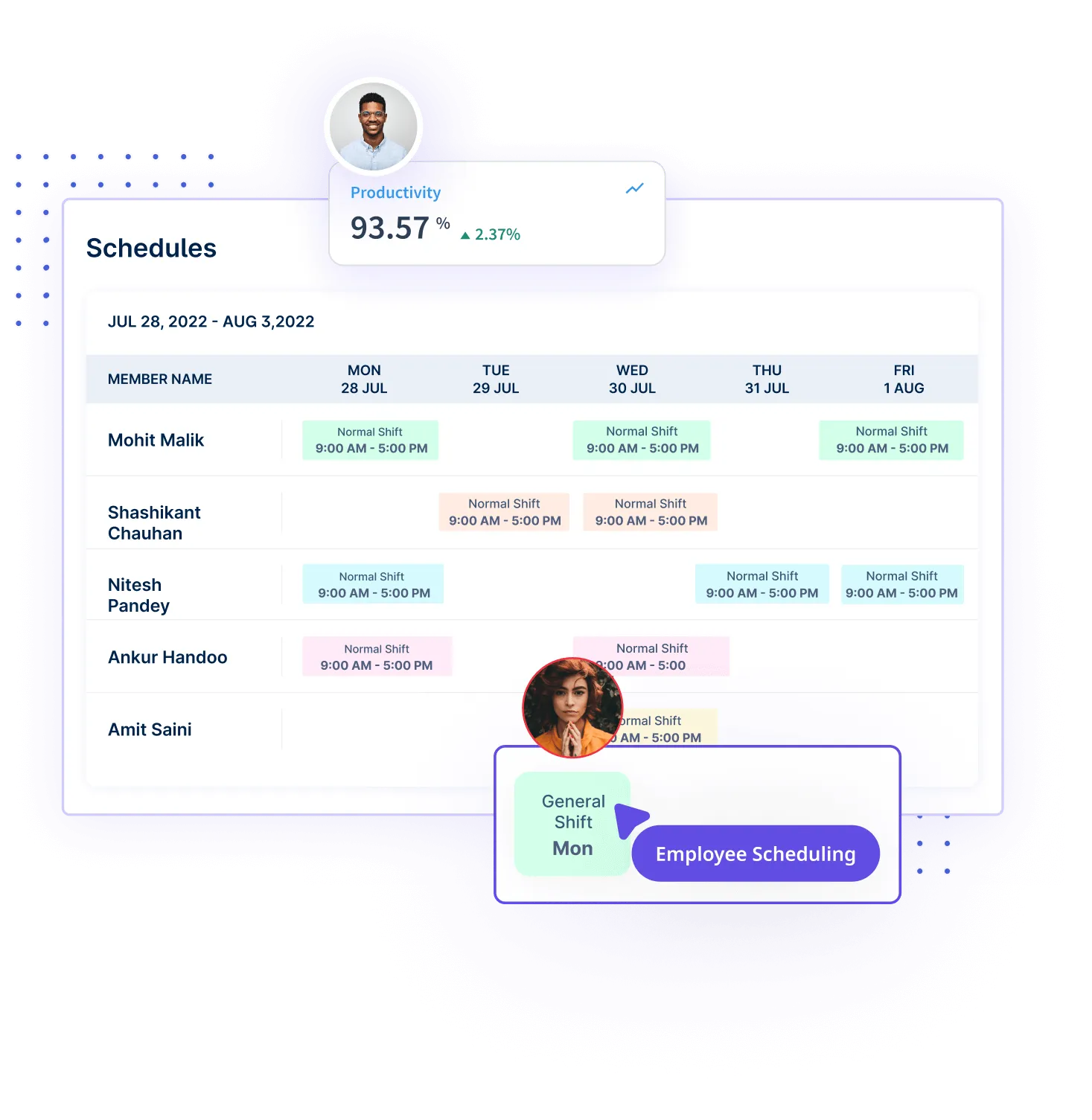
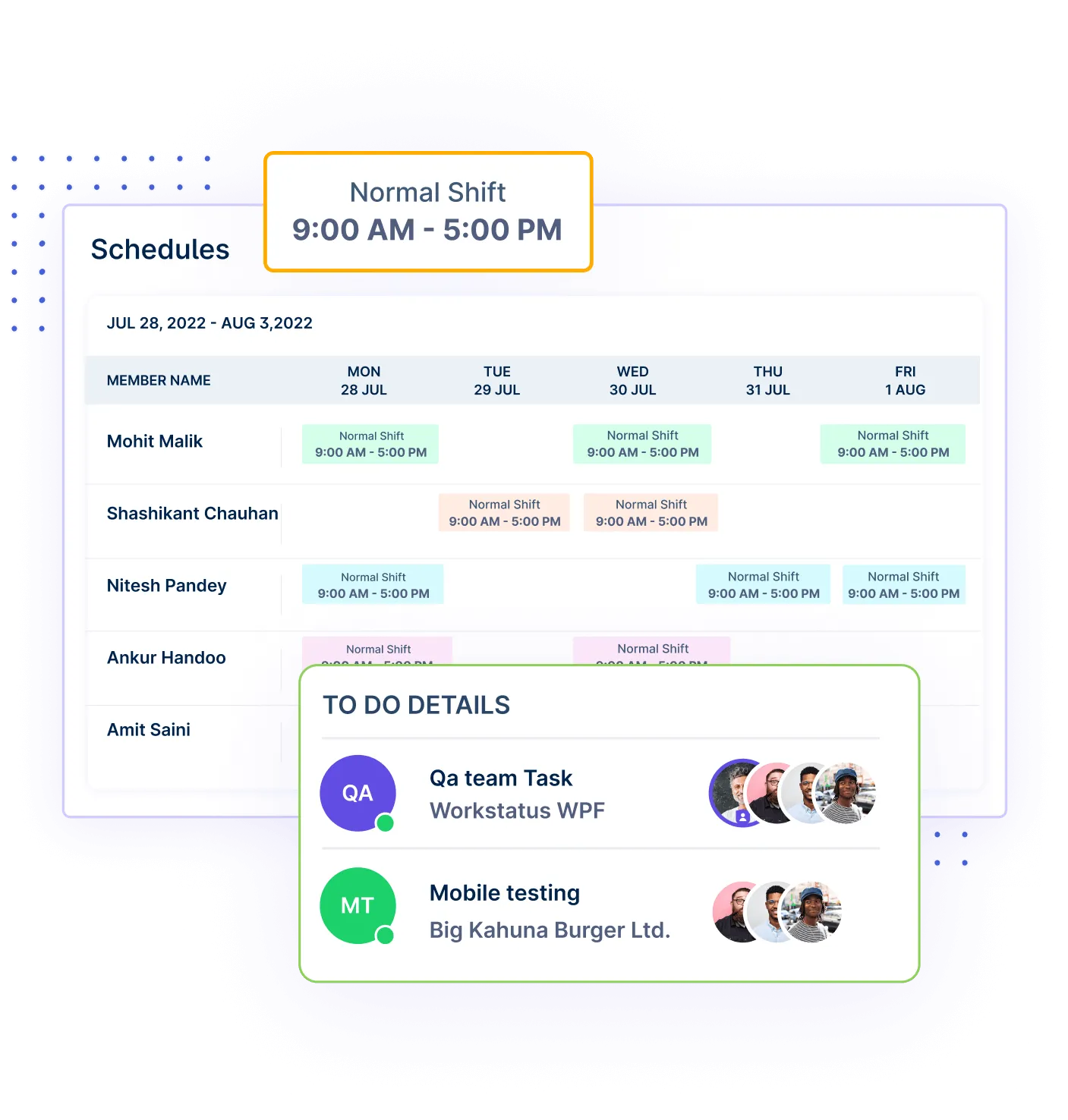
Automated scheduling with Workstatus reduces errors associated with manual methods to ensure resources are correctly aligned for job completion.

Eliminate double-booked shifts to optimize labor costs and resource use. This prevents confusion and helps maintain a smooth workplace workflow.

Automated scheduling creates predictable work patterns for employees. This improves work-life balance, potentially increasing job satisfaction and retention rates.

Understand employee patterns and improve efficiency by analyzing scheduling data. Use these insights to make informed decisions that enhance productivity and optimize resource management.
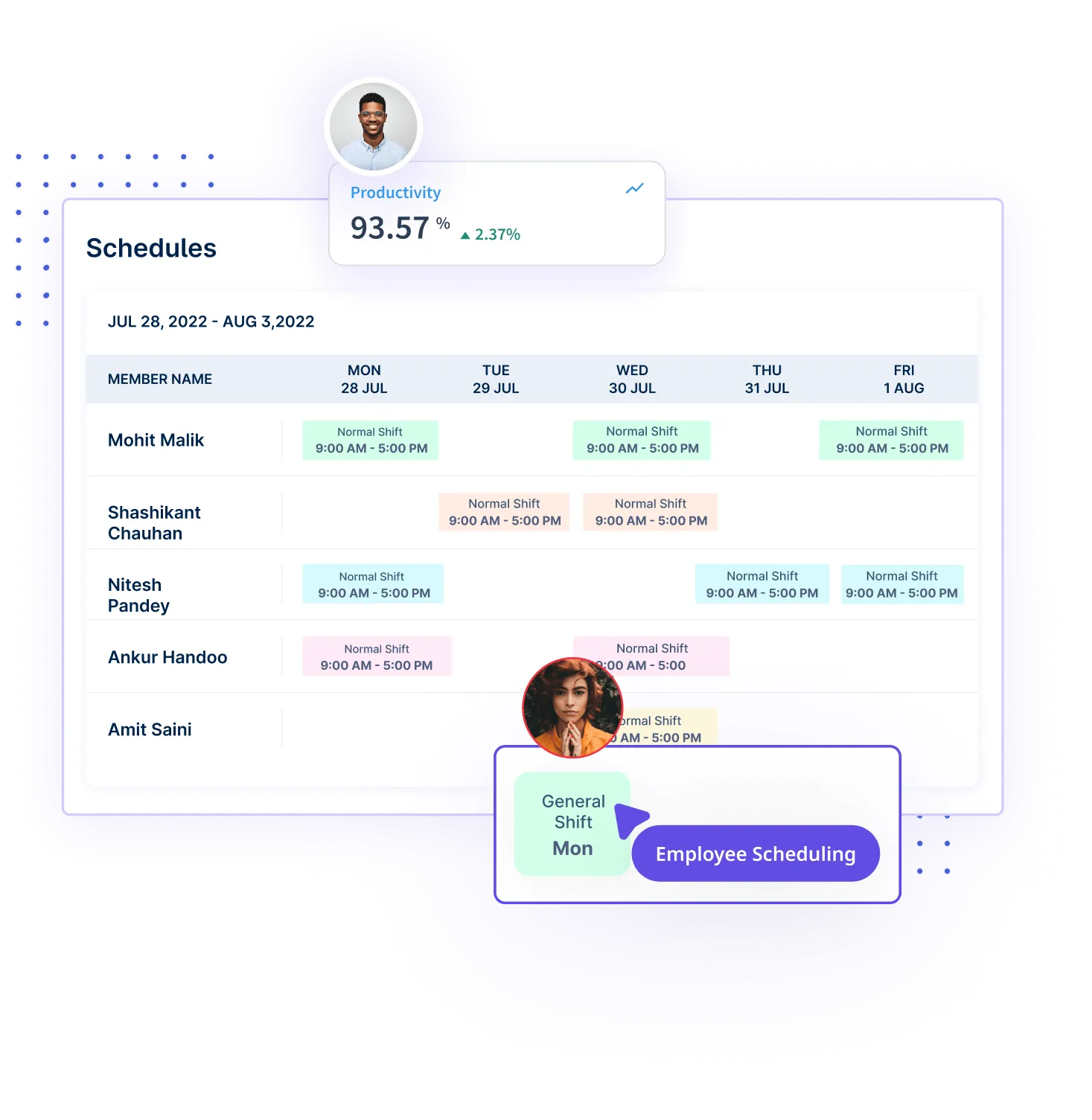
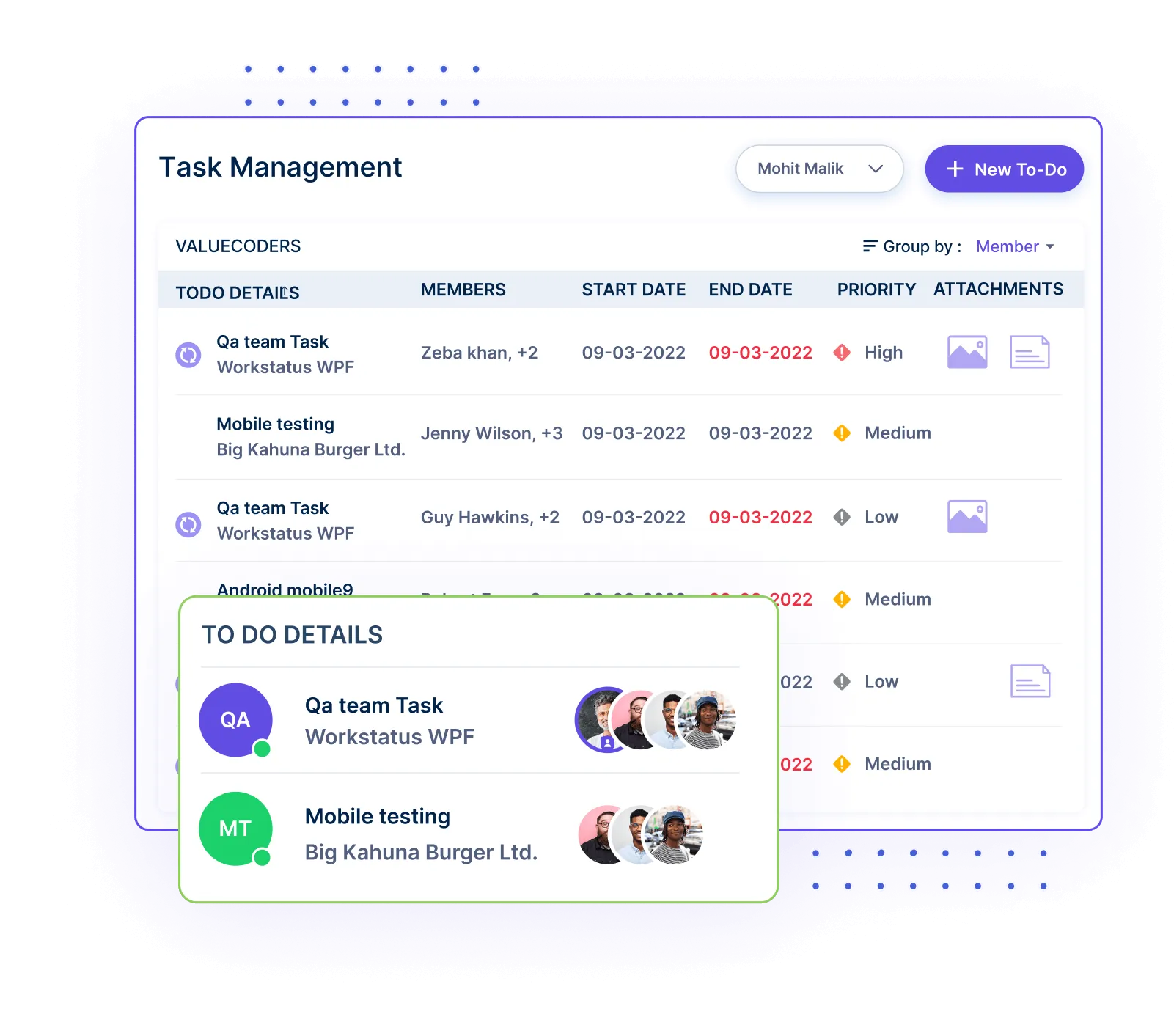
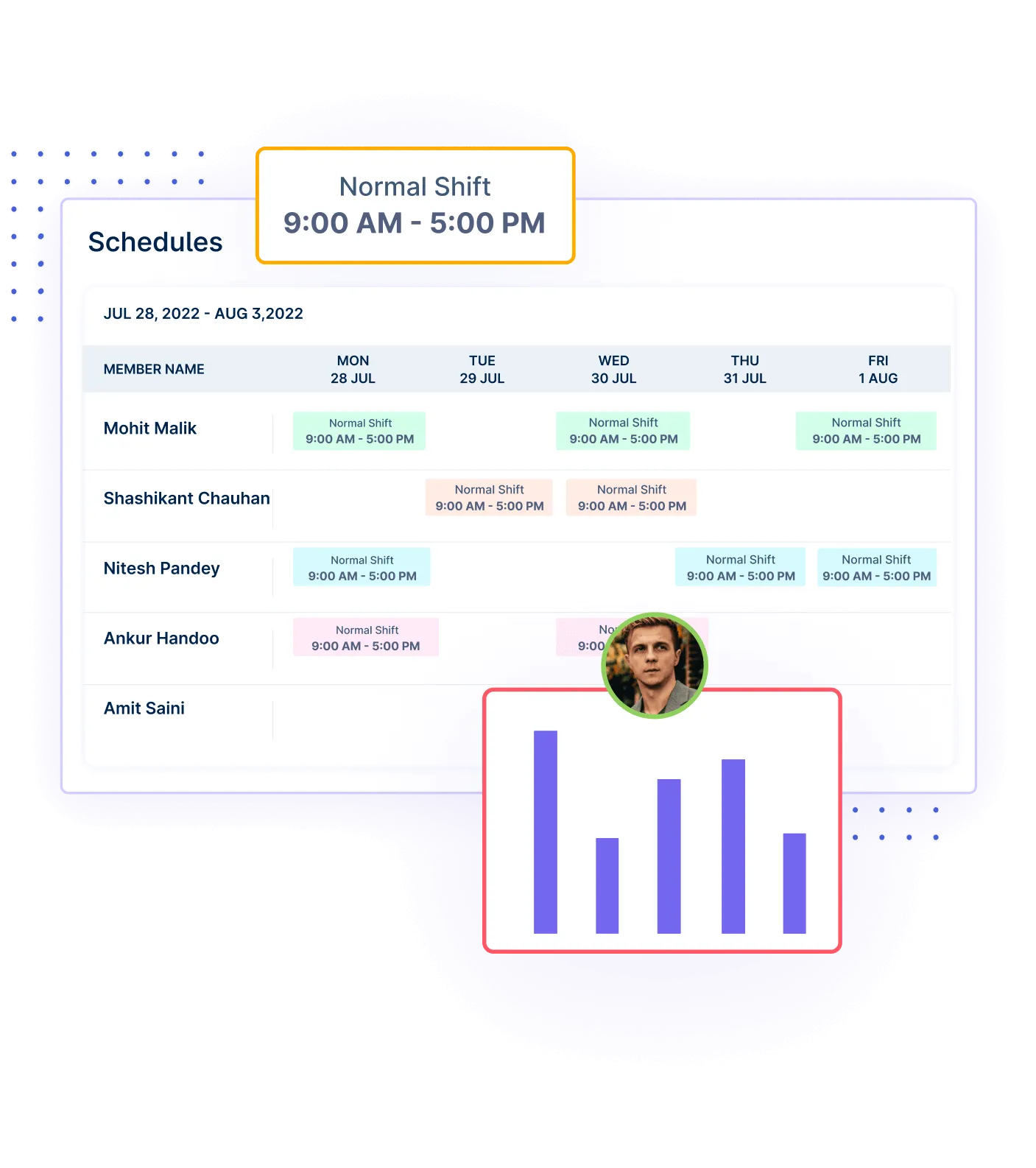
You can easily track patterns in work schedules over time. This helps you spot inefficiencies and adapt more quickly to changing needs.

With data insights, you can more effectively match staff skills to tasks. This improves productivity and ensures the right people are in the right roles at the right times.

Access to scheduling data allows managers to make choices based on facts, not guesses. This leads to smarter staffing decisions and can help reduce costs while improving service quality.

Promote fair scheduling to ensure everyone gets equal opportunities and rest, enhancing team morale. Show respect for their time and needs to create a happier workplace.
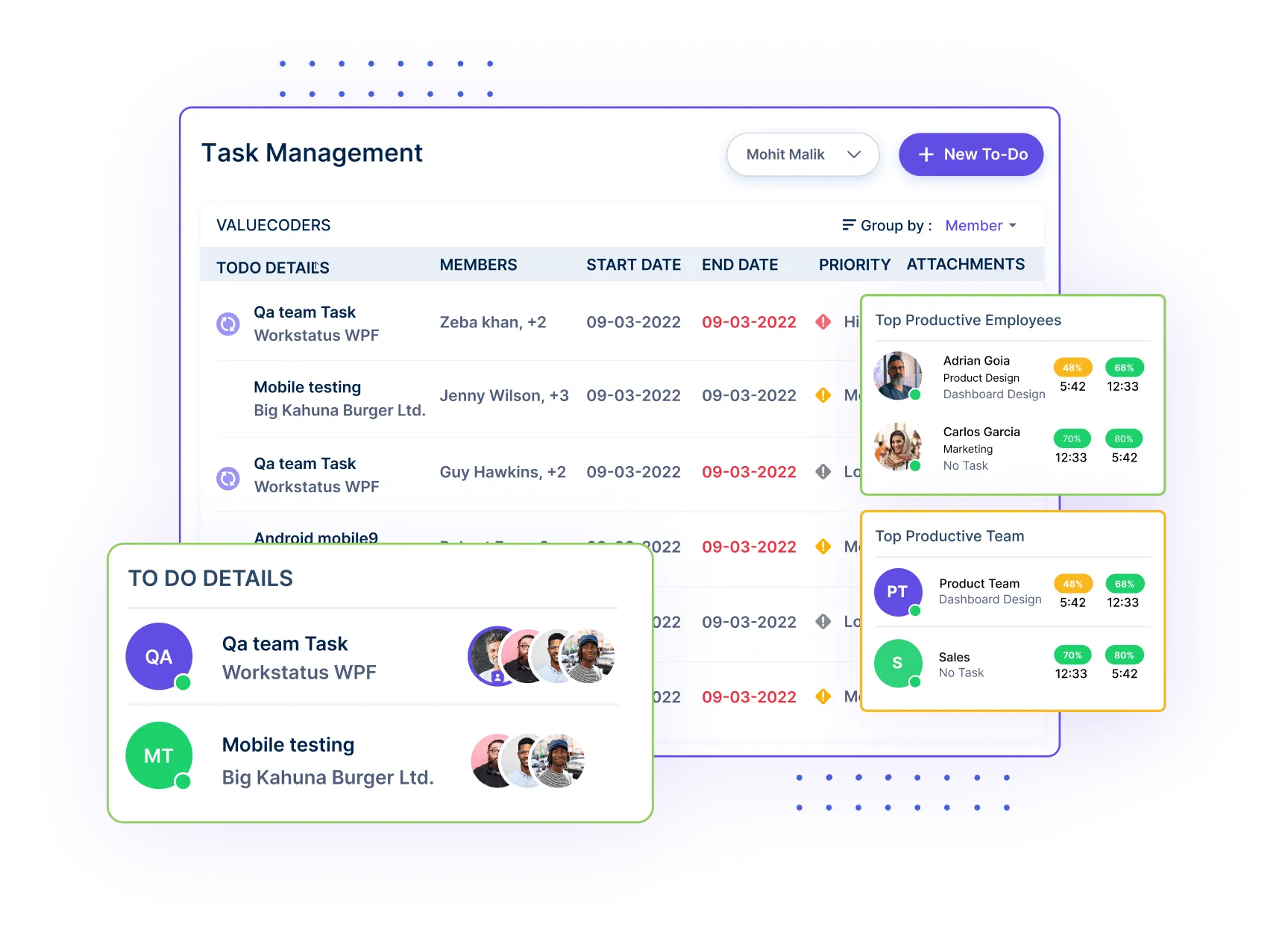
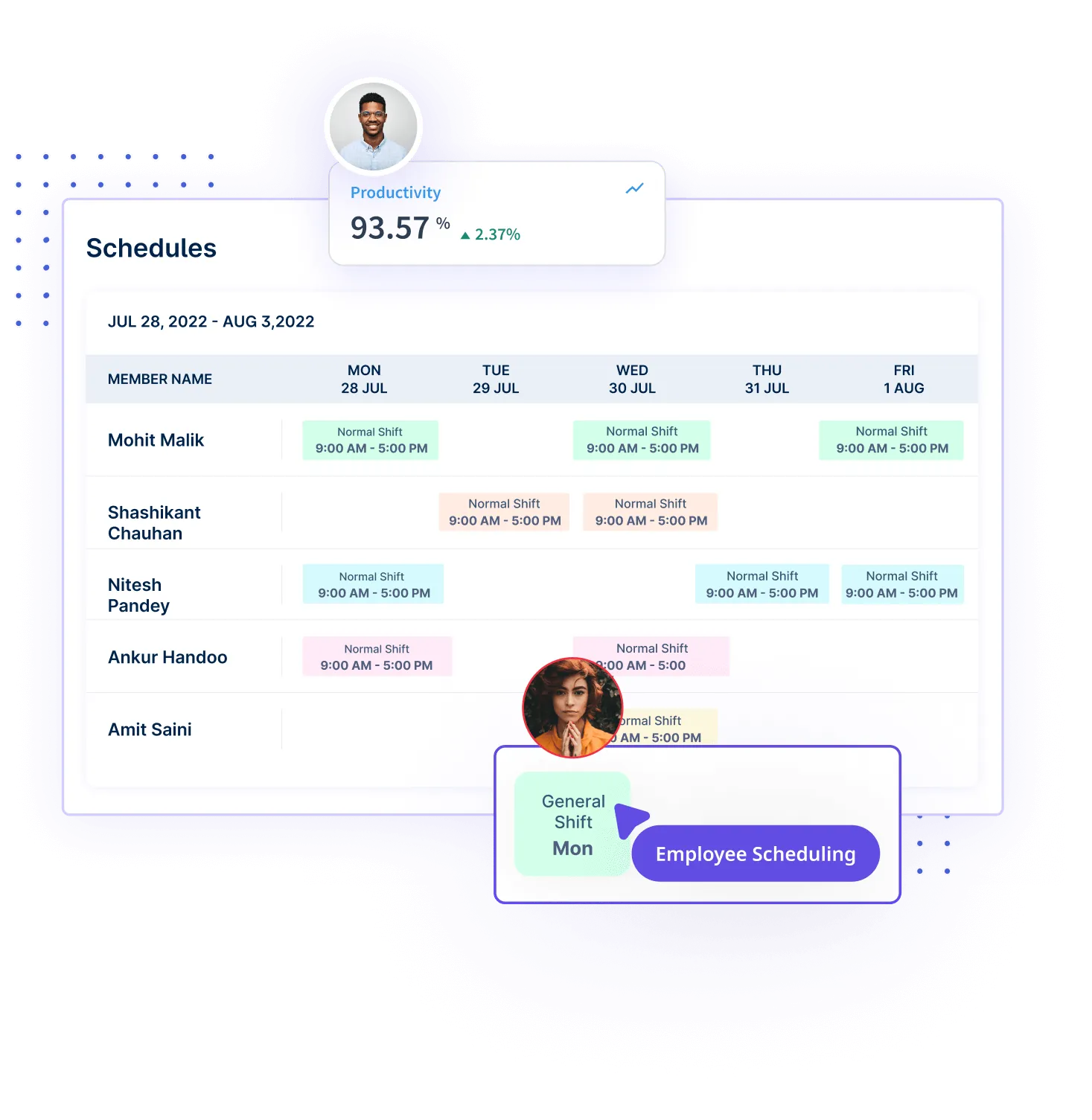
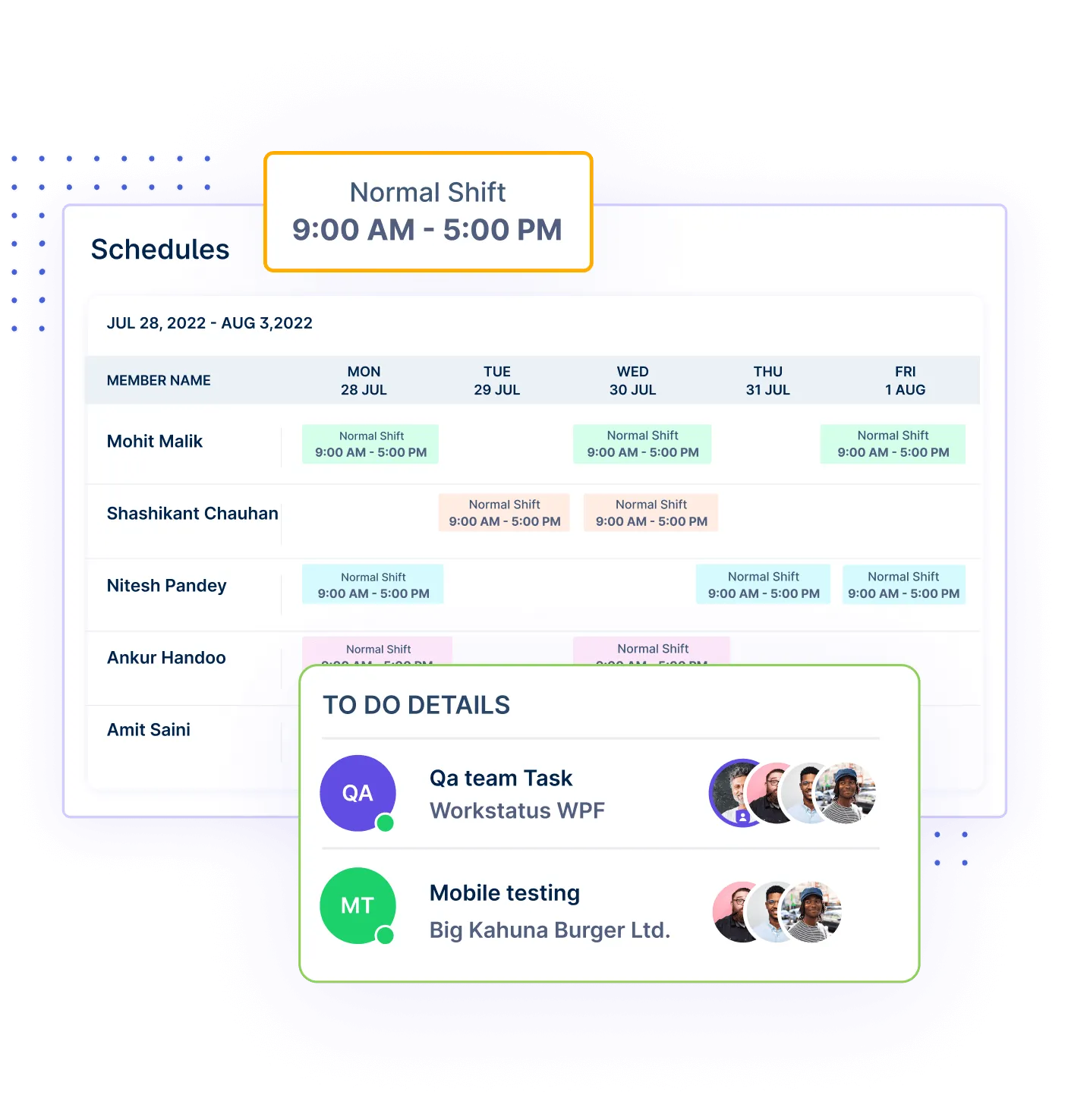
With AI-based tools like Workstatus, you can distribute work hours fairly among employees, helping maintain a positive work environment.

It makes it simple to consider employee preferences and availability when creating schedules. This flexibility can lead to higher job satisfaction and lower turnover rates.

Make quick adjustments for unplanned absences or shifts in demand. This agility helps maintain smooth operations and reduces stress on managers and staff.

Our lightweight app allows you and your team to track time, no matter where you are. With GPS tracking and geofencing, anyone can clock in automatically when they enter a job site or get reminders based on location.
Workstatus account required to use apps
“ Workstatus is an amazing tool that helped me stay organized and on track with my work. I've been using Workstatus for a few months now, and it's helped me stay on top of my work. I can always see what's due when, and it keeps me accountable for getting things done on time. Highly recommend this tool. ”
“ Workstatus has been such a lifesaver for keeping track of all our projects! We can easily see what needs to be done and when which has helped us stay ahead at work. If you really need a way to increase the productivity of your on-premise teams, we highly recommend Workstatus. ”
“ Workstatus has completely changed the way I approach my work. It's helped me become much more organized and efficient, and I would highly recommend it to anyone seeking to improve their productivity. ”
Workstatus AI-Workforce Scheduling Software combines advanced artificial intelligence with smart scheduling tools to optimize task assignments, boost productivity, and enhance workforce management.
The AI analyzes team members’ skills, availability, and historical performance, ensuring tasks are assigned to the most suitable individuals, leading to more efficient and accurate resource allocation.
Certainly, the software adapts to team expansions. It considers trends and insights to help in strategic team growth planning, ensuring seamless allocation even as your team grows.
Absolutely, Workstatus is highly customizable. You can tailor it to align with your team’s preferences, work hours, and specific requirements for a seamless fit.
Track time and productivity effortlessly.
Customized Solutions for Maximum Productivity